The 5 ways you can control the Nintendo Switch
Pick up and play in all sorts of ways
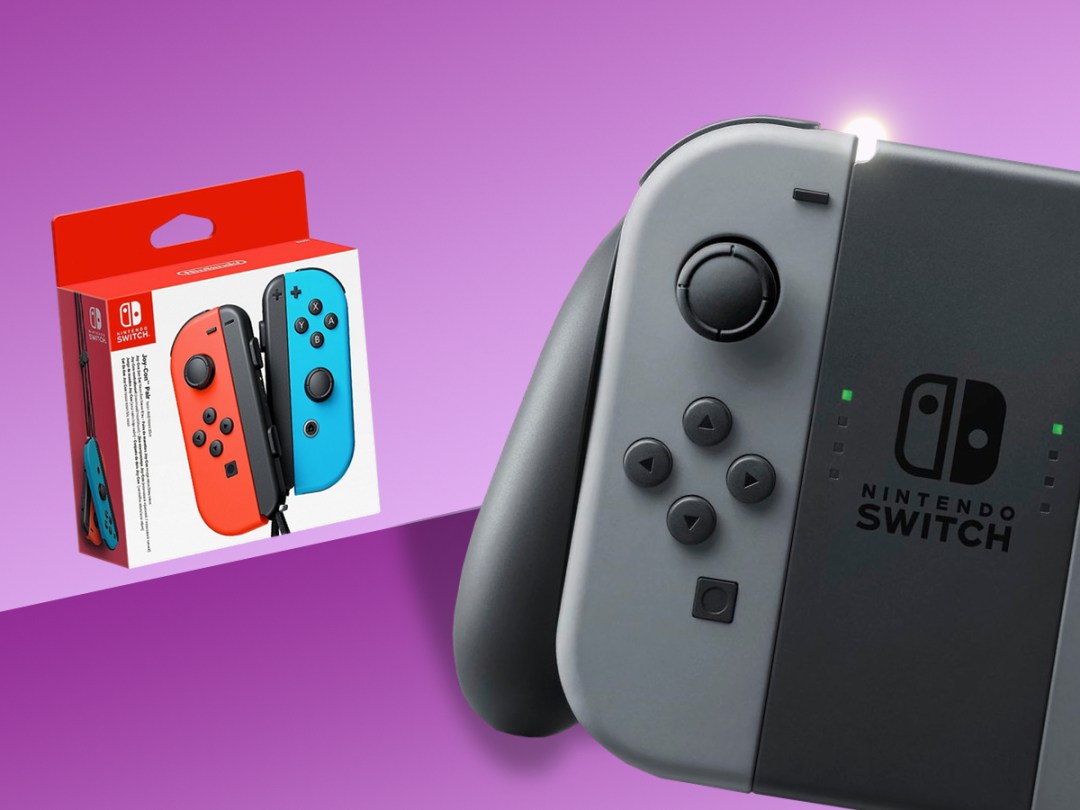
The Nintendo Switch is quite the clever console. Sure, you can berate the overly kid-friendly game line-up, but that’s true of any Ninty machine. With the Switch, Nintendo has delivered a gaming system that’s truly modular.
How so? You can use the Switch in no fewer than five ways – from thrusting Joy-Cons at the telly to tapping it as a tablet. If you ask us, the idea of five people playing the same game in multiplayer, each controlling the Switch in a different way, is pretty cool.
What are the five ways? Read on and be enlightened.
As a tablet
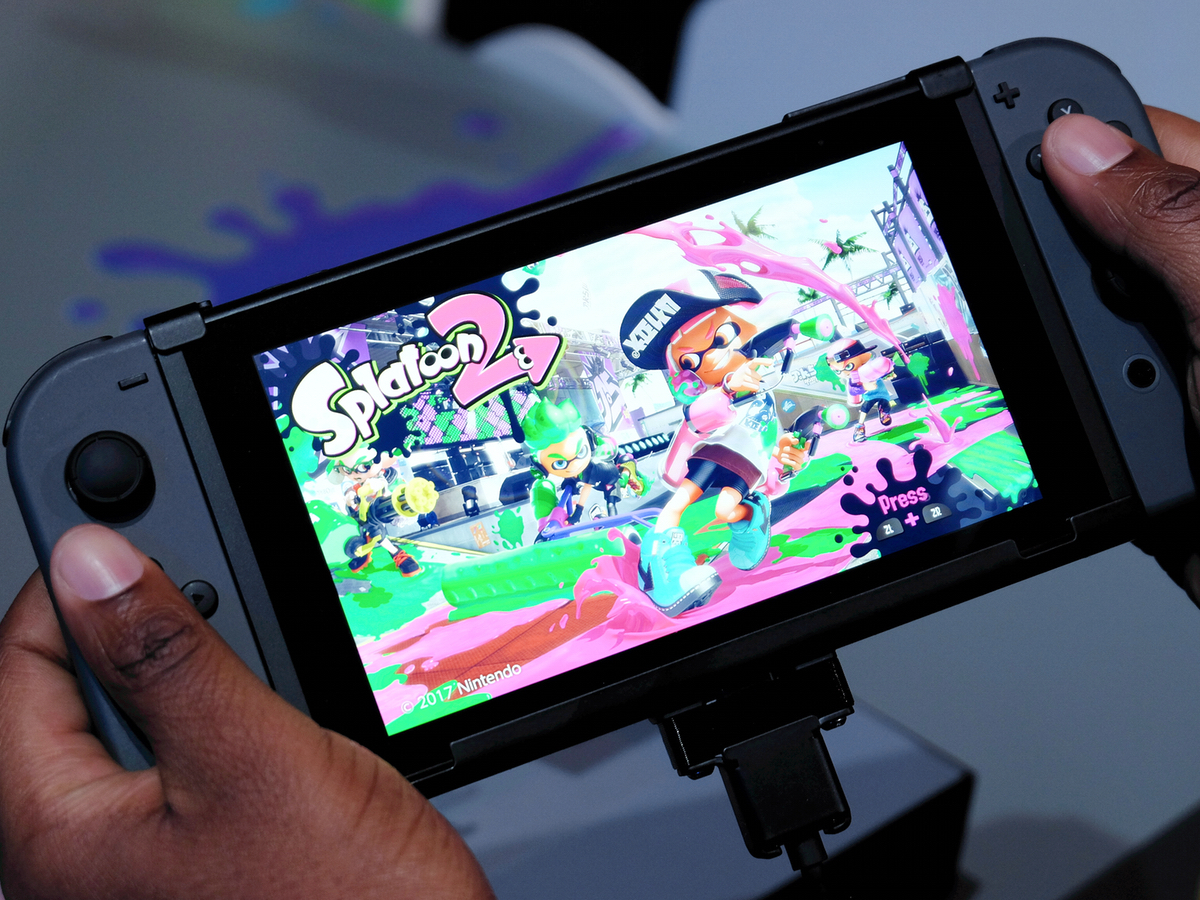
Pluck the main Switch unit from its docking station, attach the Joy-Cons to its sides and you’ve got yourself a go-anywhere games machine. The games themselves are identical, resolution aside, whether played on the Switch’s 720p, 6.2in touch display or plugged into a telly in full HD, so the transition is seamless. Battery life lands anywhere from 2.5 to 6 hours, though, which isn’t huge.
The Switch has a reassuring weight in tablet mode. While the screen is touch-enabled, it’s the Joy-Cons that do most of the work when playing – and, happily, they’re pretty nice to use. In the gloriously messy Splatoon 2, for example, the screen was bold and bright, while the combination of joysticks, buttons and tilt controls worked fluidly.
On the table with the Joy-Cons
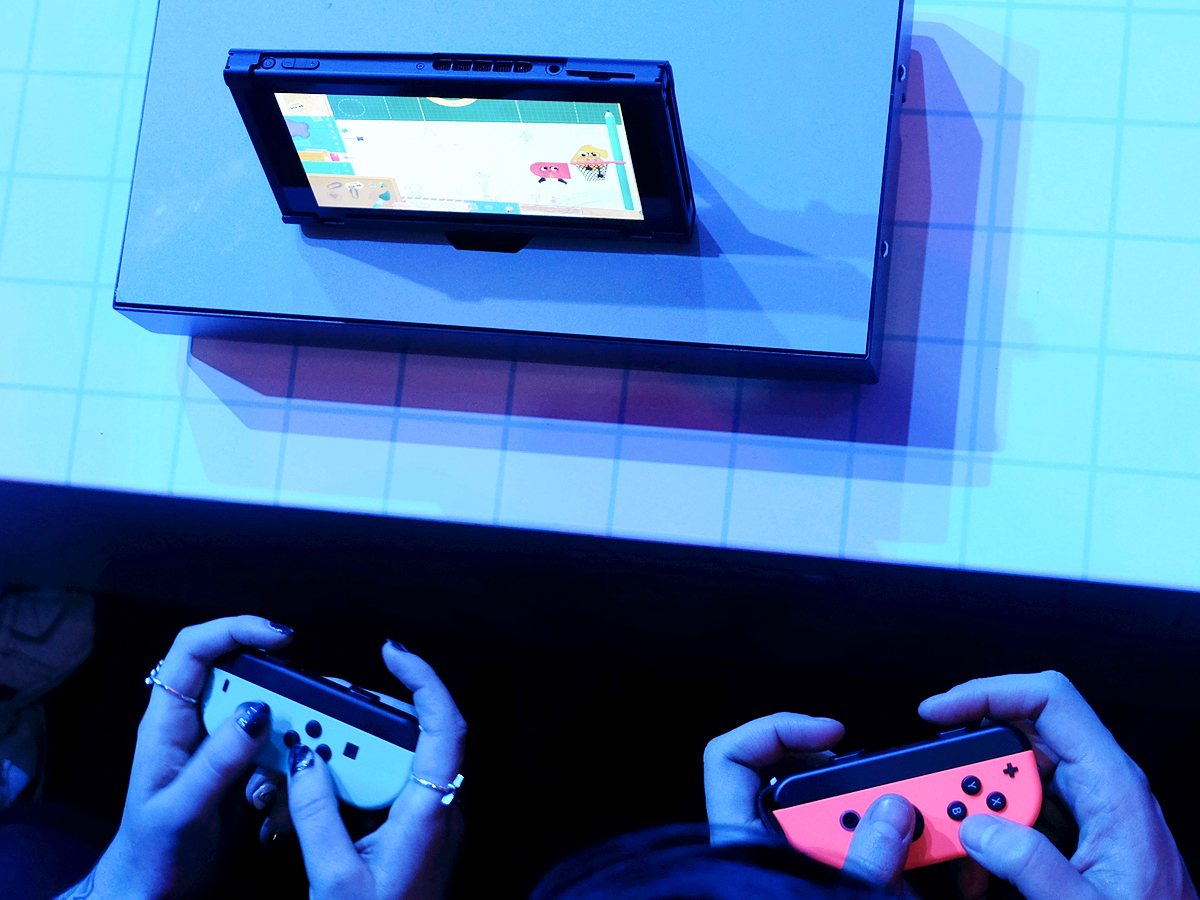
Flip out the kickstand on the back of the Switch’s screen unit, slide out the Joy-Cons and you’ve got a table-top games machine for two. While the Switch acts as the screen, players get a wireless Joy-Con each which, turned sideways, becomes a dinky gamepad.
Nintendo has done a stellar job of working out the button placement on the remotes to deliver two small but thoroughly usable controllers. Playing Snipperclips – a cute, sketchbook-style co-op game – with the Switch propped up on a table, it really works. The display is just big enough that you don’t have to hunker down to see it, while the remotes feel firm yet fun, nailing the pick-up-and-play vibe that Nintendo has sought for years.
On the TV with the Joy-Cons
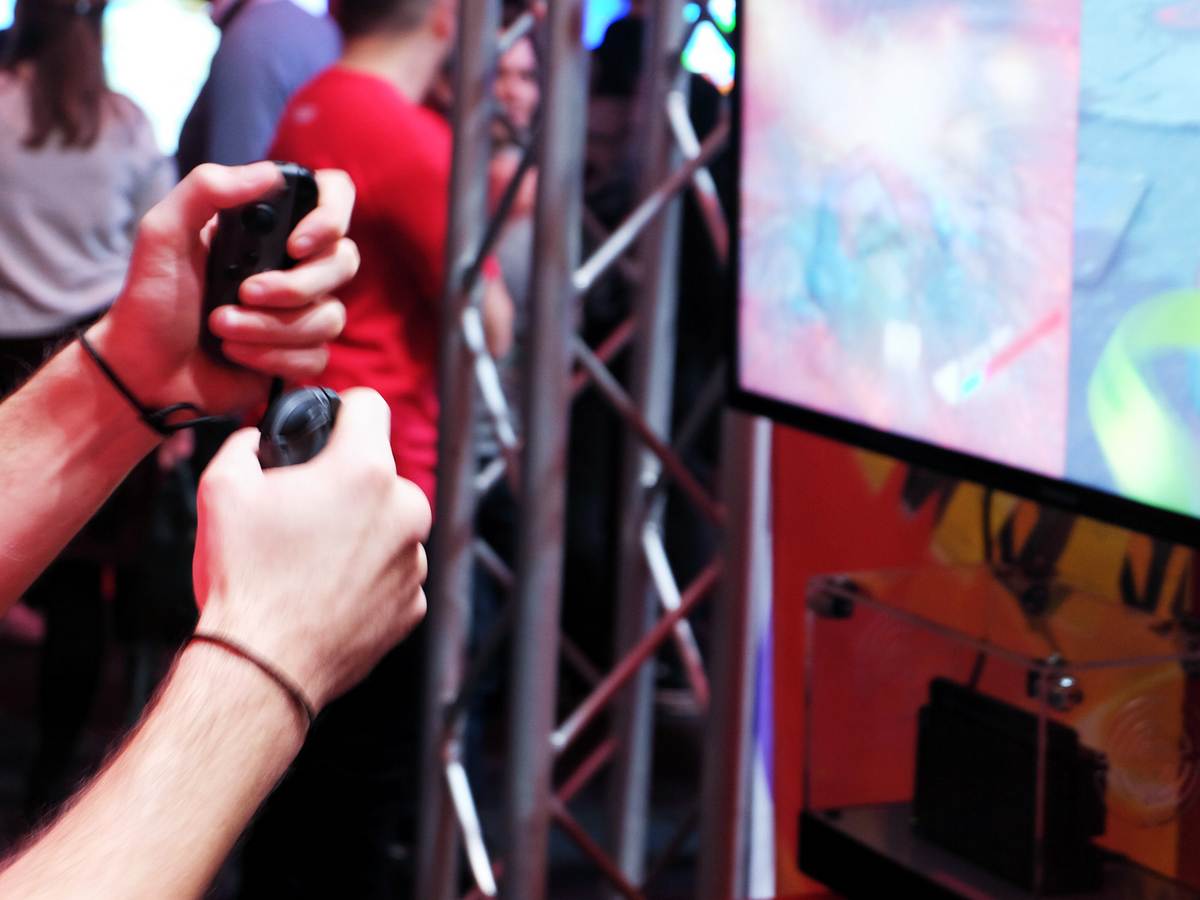
Stick the Switch in its Dock and it’ll output in 1080p to a TV screen. Making games that work on both a small and a big display is no mean feat, but the transition was near perfect at the launch event.
Pick up the Joy-Cons when the Switch is connected to the telly and you’ve basically got a pair of upgraded WiiMotes. Smaller, lighter and arguably easier to play with, despite being seriously slim, the Joy-Cons manage to feel almost ergonomic, with a pair of triggers on each remote offering easy interaction within thumb’s reach.
Boxing it out in the addictive Arms – a kind of Tekken meets Wii Sports – the Joy-Cons come into their own. Vibration feedback, paired with intuitive button combos and thrust inputs, gives them the sort of easy interaction that made the original Wii so popular.
On the TV with the Joy-Con Grip

Once you’re done waving the Joy-Cons around, you can stick them into the Grip for an odd-looking gamepad experience. Shaped grips give the unit some firmness, though there’s no escaping the strangeness of playing with a square controller.
Hurtling around a futuristic track in Fast RMX – a racer that takes more than a hint from WipEout – the joysticks felt a little small for precise control, but the Grip did a good job of retaining the easy-to-play feel of the other input methods.
Secured by a hefty cable (to prevent over-eager journalists from making off with a bit of Ninty kit) it was hard to get a feel for the weight of the Joy-Con Grip, but it certainly felt comfortable enough for longer gaming stints.
On the TV with the Pro Controller
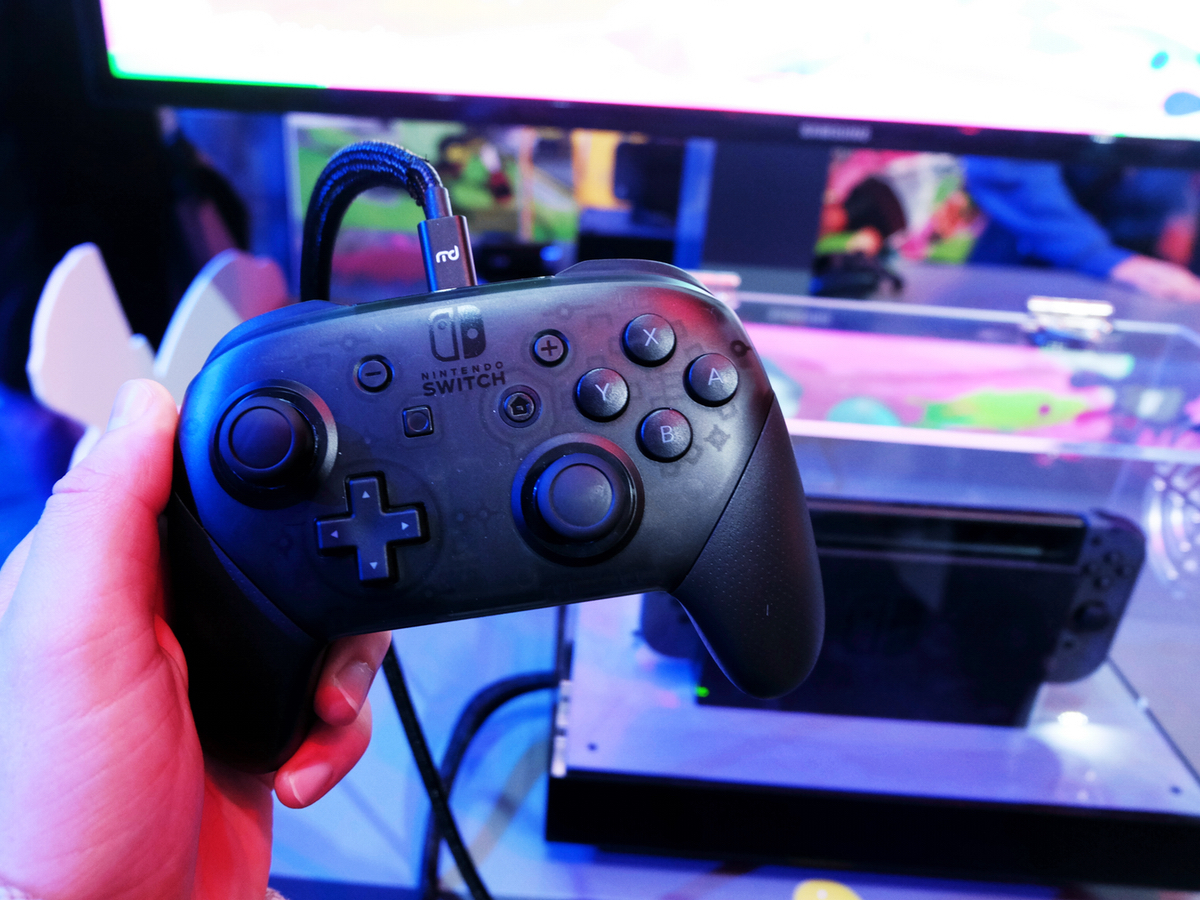
Of course, when the play turns serious it’s the Pro Controller you’ll want. Hook it up to the Switch and you’ve basically got the standard gamepad experience.
It’s nicely moulded to fit in the hand and it’s got a good weight, too. Joysticks and buttons were both responsive and within reach, and this novice paint-sprayer found Splatoon 2 much easier with the Pro remote than on the tablet. There’s a d-pad, too, if you fancy the old-school approach.
Admittedly, it could look a little nicer – with the grey-on-grey translucent plastic lacking a little bit of that Nintendo charm – but it hopefully shows that the Mario-maker wants the Switch to be a machine for both party players and serious gamers alike.



